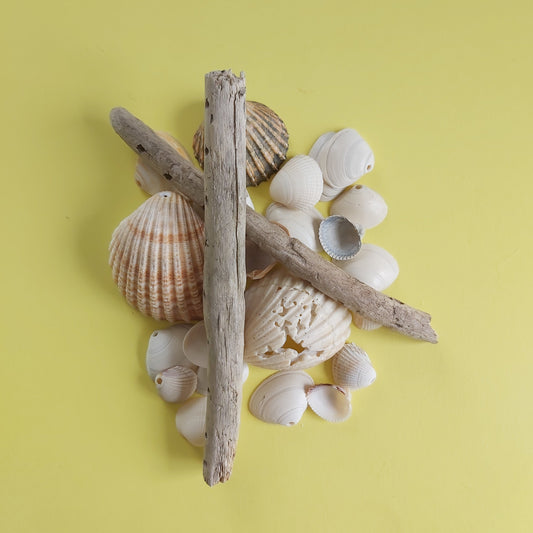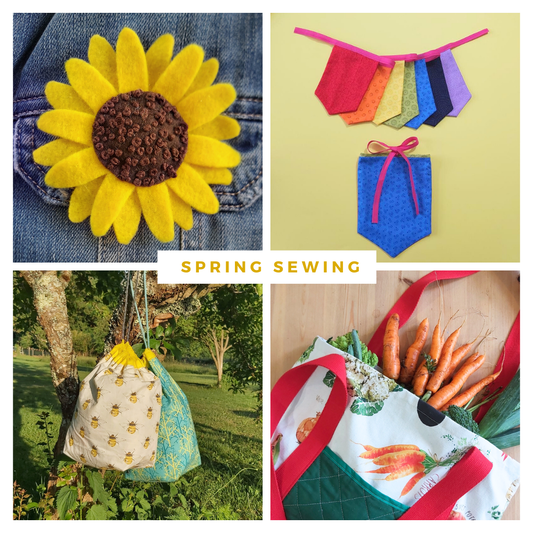Want to make Eyelet curtains in a quick an easy way? If so read on...

We recently moved house and I've made so many curtains I'm losing count! By far my favourite has been the ones that I made with eyelet rings and in this post I want to show you how you can do it too.
Something to note: I chose a fabric that was thermal lined and no fray which was great idea. So just to be clear, the curtains I'm making here in this post are not lined.
If you are still with me and you are keen to get started here's what you'll need:
Kit List:

> Medium/heavy weight woven fabric - I chose a thermal backed fabric called ALASKA from Linder.fr if you can find something similar I would highly recommend!
> Eyelets / Grommets - 40mm is a pretty standard size and you will need an even number (see below step 5)
> Good fabric scissors
> Optional rotary cutter / patchwork ruler to cut good straight edges
To calculate the amount of fabric you need I usually measure the window recess, multiply by 1.5 and then divide by 2. This gives you the required width of each curtain panel (I am presuming you want 2 curtains) so you can make sure the standard with of your fabric is wide enough (you may have to have a join if you have very wide windows).
To calculate the length you need, measure the drop from rail to floor and add half a meter/yard for hems etc. You can always ask advice at the fabric shop they should be able to help too.
And to help you get organised why not download my FREE Project Planner Sheets
Right do you have everything you need?
Let's get started!
If you would like to download these instructions to print see HERE
STEP 1. Straighten the top edge, note any grain or nap.
When working with large pieces of fabric like curtains I like to fold the fabric down to manageable lengths/widths and use a quality rotary cutter and patchwork ruler to cut through the layers looking for straight grain

2. Hem the top edge 1cm (single fold)
The fabric that I used in the photos did not fray which made this step very easy (see above)

3. Turn over top edge right sides together approx 13cm down from the top (this will become your eyelet band area)

4. Bag out top corners by sewing the fold approx 1.5cm in from the edge (if the edge of your fabric frays consider turning 2cm)

Turn the corner through, clip and poke out with a pointy implement.

5. Measure finished total width of curtain panel and calculate ideal position of your eyelets.
When sewing with eyelets there are some things to consider:
- You must have an even number of eyelets for the curtain to hang neatly at each end without showing you the backside.
- The first and last eyelet is usually placed approx 4cm in from each end and 2cm down from the top edge.


To calculate the position of the remaining eyelets divide the distance between first and last ring by the number of spaces (x7) remember the answer and space each ring equidistant apart.
TOP TIP for this step - mark each with a pin before you commit so that you can make any changes before marking and cutting.
6. Mark the desired position of the eyelets by drawing inside each ring (I used sharpie as the pen mark will disappear when you cut in the next step.

7. Cut out each circle with a 3mm extra margin. Don't be shy if you don't cut enough the eyelet will struggle to clip shut.

8. Attach your eyelets.
The rings come in pairs, insert one underneath and one on top of the hole in your curtain header and press down FIRMLY and evenly until you hear several audible clicks and the eyelet is firmly attached.

9. At this point I usually hang my curtains for a day or two so that the fabric can drop and settle before I hem.
This is fine if you are home sewing but obviously if you are making the curtains for someone else or selling them, move straight on to the final step and hem to the desired length.

10. If possible measure and mark your curtain/s with a pin whilst they are hanging on the rail.
Then straighten the bottom edge and double fold hem.

Et VOILA! (As they say in France which is where I am now)
Now do yourself a happy dance and start all over again if you need two curtains that is. In future you might make the two curtains at once step by step.
As I said earlier if you would like to download these instructions to print see HERE
I hope that you like this tutorial and find my sewing tips helpful. If so please leave a comment below and share your sewing success with me on your favourite social madia platform @frecklesandcocraft #frecklesandcosewing
Until next time, Happy Sewing






